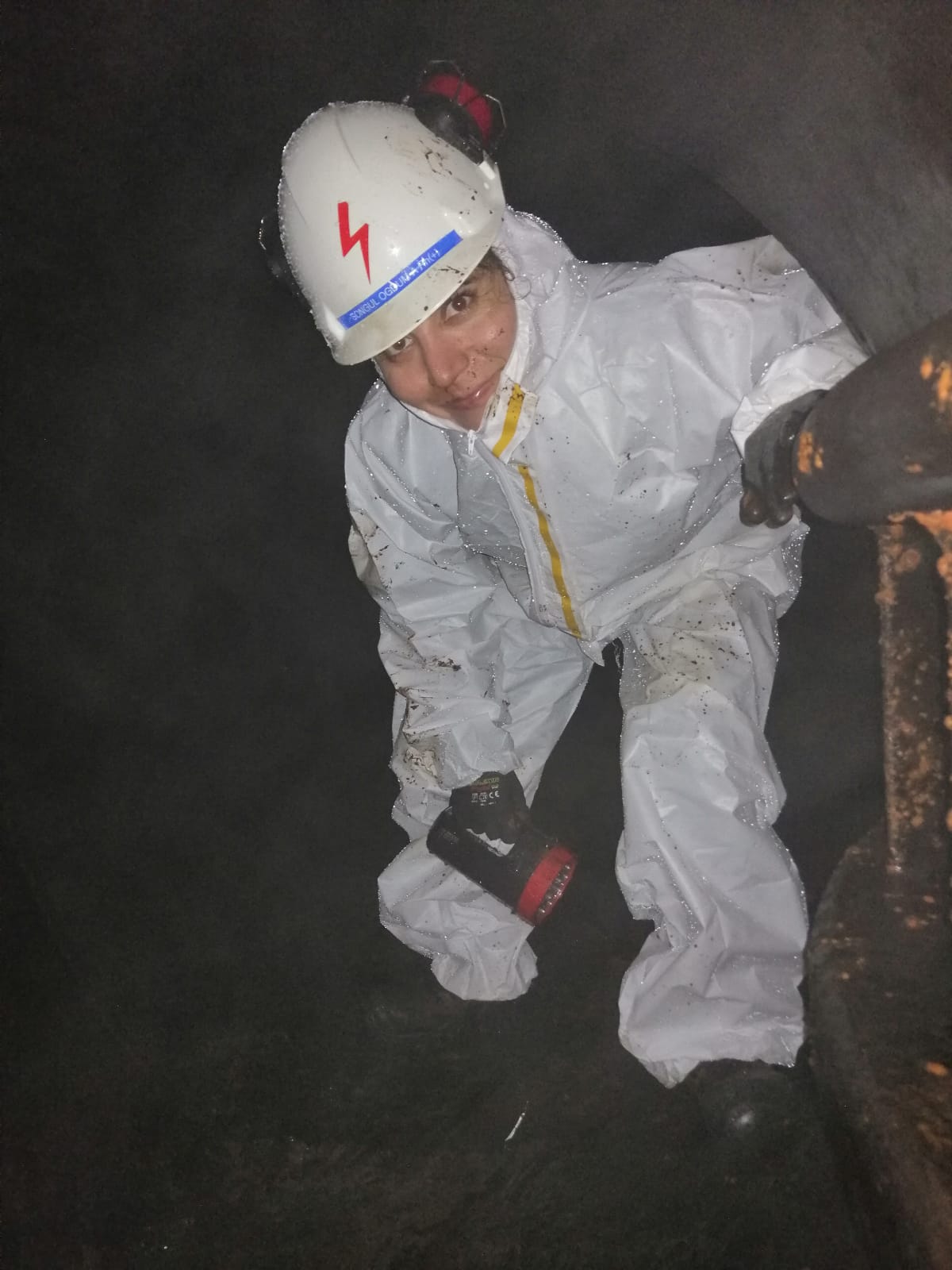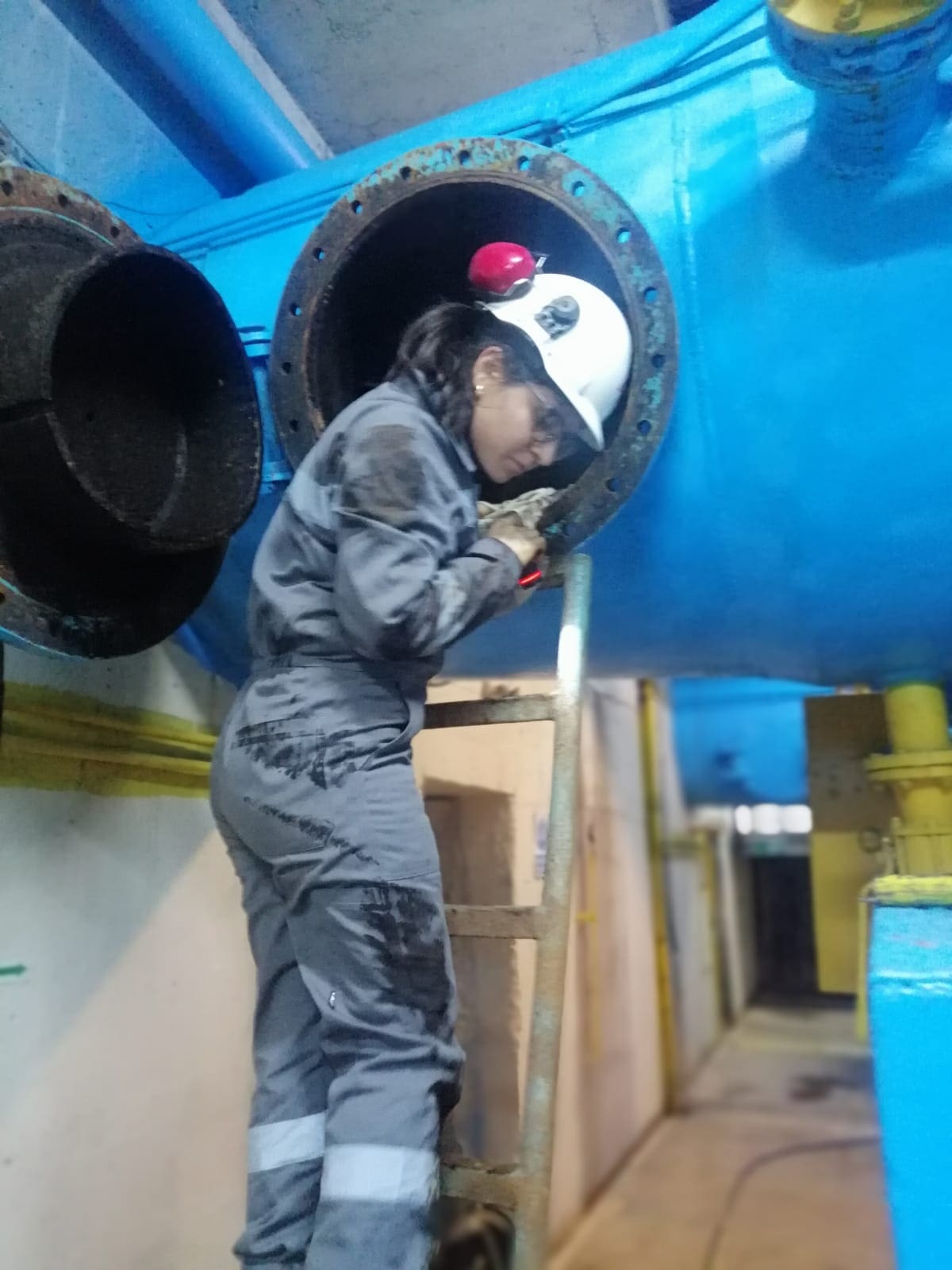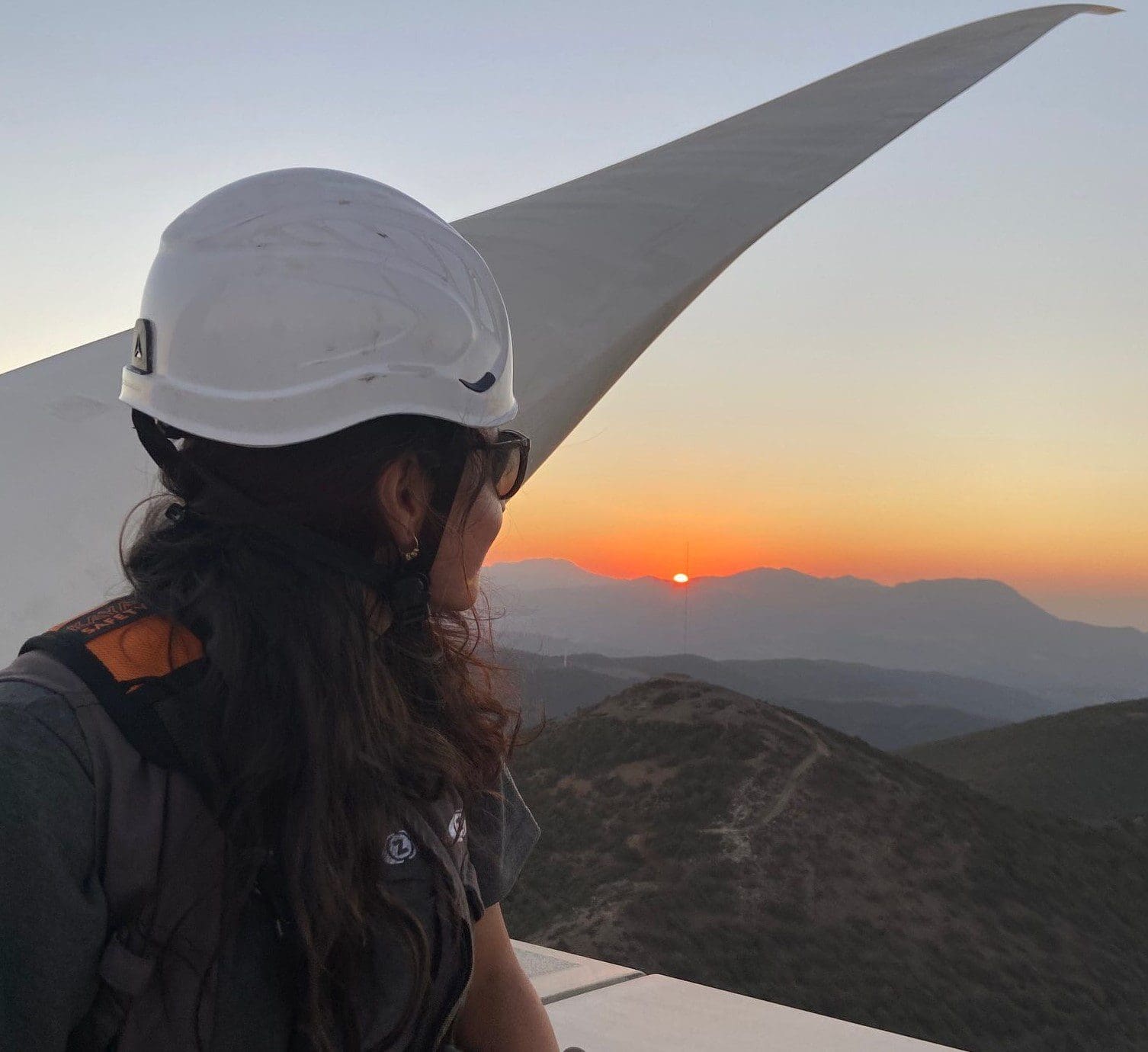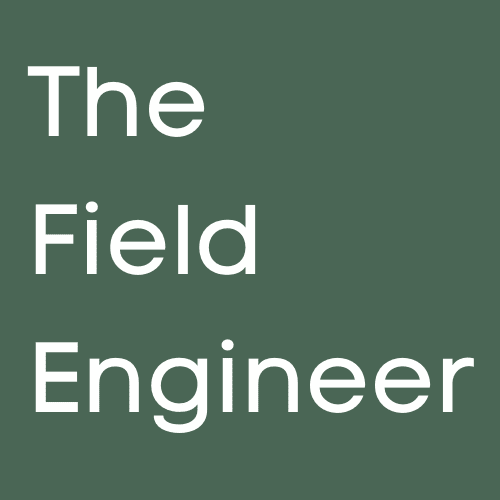A woman who adds her energy to renewable energy
Renewable Energy Engineering
This article discusses renewable energy engineering both wind and hydroelectric power. It focuses on one woman’s work on wind and hydroelectric turbines. The Field Engineer meets Songul Ogdum.


Background
You studied Energy Systems Engineering at university? What attracted you to engineering? Did you like technical subjects from childhood?
Yes, I studied Energy Systems Engineering at university. The reason I choose engineering was because I had always been a problem solver who enjoyed coming up with new ideas and new point of views.
For example
I used to live in a small village where it is mostly snowy and cold for about 4-5 months of the year.
Our house was an earth-sheltered home and the roof had to be cleaned when it snowed. I developed a mini snowplough for this job which could clean the roof with zero-touch.


Inspirations and role models leading to Renewable Energy Engineering
Was there a particular person who inspired you to study engineering?
Although I can say that there are people who inspire me, I found my own way in the beginning.
My hometown was a deprived area where there were always power outages. Our electrical devices were constantly breaking down due to these frequent power cuts.
For this reason, I used to think of ways to generate electricity from natural sources.
Who were your inspirations or role models?
As I mentioned, at first, I found my own way. However, then I read a lot about the renewable and electricity industry. I found out about Nikola Tesla and also Edith Clarke who was the first woman to be professionally employed as an electrical engineer. I read their biographies and it impressed me so much. After that, I started to love engineering even more.
You then studied electrical and electronics engineering. Was studying this time easier as you had a lot of practical work experience?
I started to study electrical and electronics engineering while I was working. It was a great opportunity to learn about a field that you are already working in. Sometimes I used to feel that I had done things backwards. That’s because, generally we learn the theory first and then apply it in practice. However, I was already involved in industry, and I was able to gain a lot from the classes because of this. Even the lecturers asked me to give work related examples from time to time.
Working in Renewable Energy Engineering in Hydroelectric Power Plants


You worked as a Specialist for Operation and Maintenance. What exactly did your job involve?
In fact, I can say that the natural structure and problems of the region where I was born shaped my study and work areas.
The region has very rich surface water resources that can feed large dams. So, I started to study hydroelectric power in my thesis when I was at university. I conducted studies on the efficiency of hydraulic turbines.
After that, I started to work as an operation and maintenance engineer in a hydroelectric plant which has 15 MW installed capacity. It has 3 units of vertical Francis turbines (a type of water turbine) and each has 5 MW installed capacity. I used to arrange the maintenance plans of the turbines and I was responsible for periodic, preventive, and predictive maintenance of the turbines.
In addition, I would do the necessary annual operation studies to ensure that these turbines operate under optimum operating conditions.
What is the most difficult part of a hydroelectric power plant to maintain?
Hydraulic turbines are made up of gigantic parts, and failure resolution and management can be difficult during flood periods.
Turbine blades or runners are the most difficult part to reach and maintain. Also, the alignment of the bearings can be critical sometimes.
Move to Wind Power Renewable Energy Engineering
Why did you decide to move to wind power?
Wind turbines have always impressed me with their views from the top. Since I was a teenager, I dreamt about climbing one of them.
Luckily, the company I work for has 1000 MW installed capacity of renewables.
Its production portfolio includes:
In Turkey:
7 hydroelectric,
2 wind,
4 geothermal and
3 natural gas power plants.
In Pakistan:
1 wind power plant.
In Israel:
3 natural gas power plants. While working in hydroelectric power plants, I was sometimes called to the wind power plant for breakdowns and major equipment maintenance such as gearboxes and main shafts. After more than 4 years in the hydroelectric power plants, I got a chance to move to wind power.


Which skills were transferable?
Through the operation and maintenance positions I’ve held in hydroelectric, the technical skills I’ve acquired and used during each job and after, are as follows. Knowledge of both electrical and mechanical systems.
Problem solving.
Troubleshooting in mechanical and electrical machinery.
Ability to use technical tools.
Knowledge of electrical processes.
Knowledge of safety protocols and procedures.
What is more challenging about working on wind turbines?
To be honest, I think there is nothing more challenging about working on wind turbines. Basically, you learn the job and do it but sometimes dealing with personal needs can be a little bit difficult: toilets for example. With efficient working practices there is no difficulty that cannot be solved.
Typical week working in Renewable Energy Engineering
What’s your typical week like?
Well, I start work at 08.00.
I look at the failures from the Scada data and make a work plan.
Then my team and I go to the turbines and implement the work according to the plan we made in the morning.
After we have completed the work, we record what we have done using certain business applications.
I am also responsible for the stock of electrical materials.
How many days do you work before a break?
I work 5 days a week, Monday to Friday. However, I also work at weekends in case of malfunctions and major equipment maintenance and replacement. Sometimes I even stay out in the field until late at night.
How much of your time is spent ‘hands on’ (on the turbines) and how much on admin or other tasks?
Actually, it depends on the weekly plan.
Sometimes I spend the whole week on the turbine or in the office. But I usually spend at least three days a week on the turbine.
What size teams do you work in?
I work with a large maintenance and repair team of 30 people. This team also has the distinction of being the first team to carry out maintenance and repair in wind power plants in Turkey.


Challenges of working in Renewable Energy Engineering
Have you ever arrived and found that it’s been much easier than you expected? For example, have you just needed to switch something on?
Actually, not for myself. That’s because I know that there is nothing I can’t overcome because I do it with love.
However, I may have switched something on for others who think that it is not a suitable job for a female. (Especially male industry representatives and employees….)
Physical fitness
How important is physical fitness at work for you?
Physical fitness at work is a huge priority.
The climbing we need to do, and the air temperature have a lot of effects on the human body both physically and emotionally. So, this puts pressure on us.
For example, there is a temperature difference of 10 degrees and an altitude of 1000 m between where I live and where I work.
In order to overcome this, I try to dive in the sea (as this also has changes in pressure) and keep my body hydrated all the time.


Safety clothing
What sort of safety clothing, footwear and harnesses do you need to wear?
We wear many different types of Personal Protective Equipment (PPE) for our safety.
Steel/Composite Toe Boots
These are to withstand impact or punctures from sharp or falling objects.
A hard hat
The hat is to protect yourself from potential injury from a falling object or low hanging beams or equipment within the turbine.
A harness
This is to prevent an injury from a fall from heights.
Safety glasses
These are for eye protection as there is a lot of dust and dirt where we work. Even if the overall quality of the air is clean where you are, there can be a lot of dust on the equipment you maintain such as transformers, motors etc.
Gloves
There are different types of safety gloves for different types of work.
Are there challenges finding things which fit well and are comfortable? (are most things designed for men?)
There certainly are challenges.
We cannot say the same for shoes. I can easily find the right shoes to fit me, but even the smallest size of the clothes is sometimes too big.
Once, I had to send my trousers and jacket twice to a tailor to make them smaller.
How do you personally cope with the heat and the cold?
I basically use ARC Rated clothing. But I can say it is a challenge to find this type of clothing easily.
Women in Renewable Energy Engineering


You are working in a male dominated industry. How do you find this?
I can honestly say it was harmful at first. Because we are mostly the only women working in the field and we do not have a fellow woman with us. Sometimes you may be exposed to challenging attitudes and statements by male employees that you are not suitable for the job.
However, after a while, when you prove yourself in your job, everyone starts to respect you.
How do you think it will change over the next ten years?
I hope, and also, I know that there will be more women in this field.
This industry needs women’s passion and strength in work which requires attention to detail.
What needs to be done to encourage more women to consider this career?
This may sound weird, but I think there is no need to encourage women in this field. That is because there are already many women who want to work in renewables and wind turbines. So, it will be enough for the sector representatives to give women an opportunity.
What would you say to a woman who is considering working in the wind power industry?
As I woman in the wind power industry, I would say to women who are considering working in this industry that it is ok to feel confused and scared at first. I say this because I know that many of them feel this way. As well, I would say that it feels great to work in the clean energy sector and feel like heroes who protect the world.
New Wind Turbine Technicians
Apart from a strong technical background, what are the three most important skills to have?
As far as I am concerned, problem solving competence, teamwork and communication skills are the most important skills to have.
About the author
Songul Ogdum studied engineering and has experience working in hydroelectric and wind power plants. Her current role is as an Operation and Maintenance Specialist for Wind Power for the Zorlu Energy Group. Songul is based in Turkey.




Responses